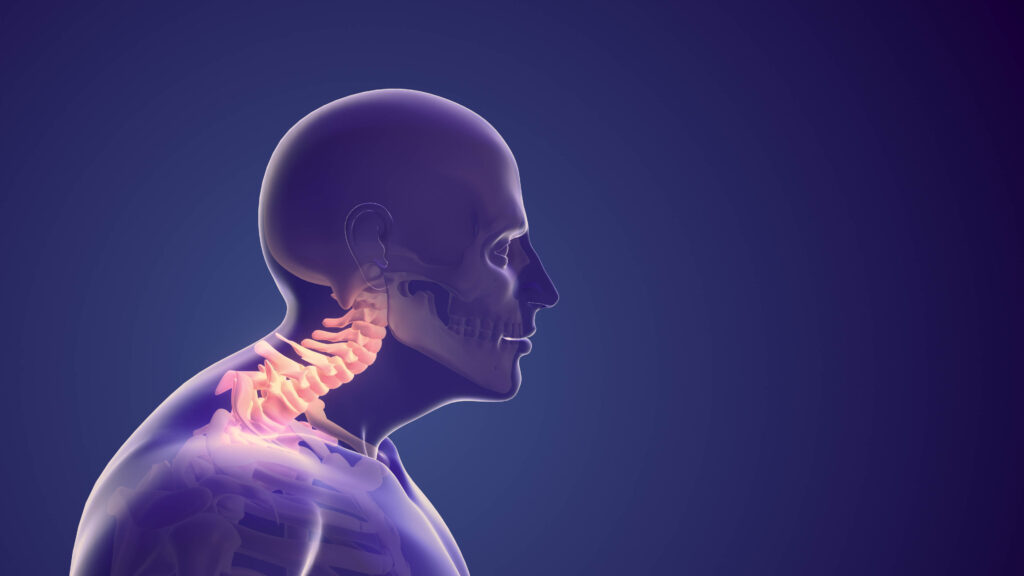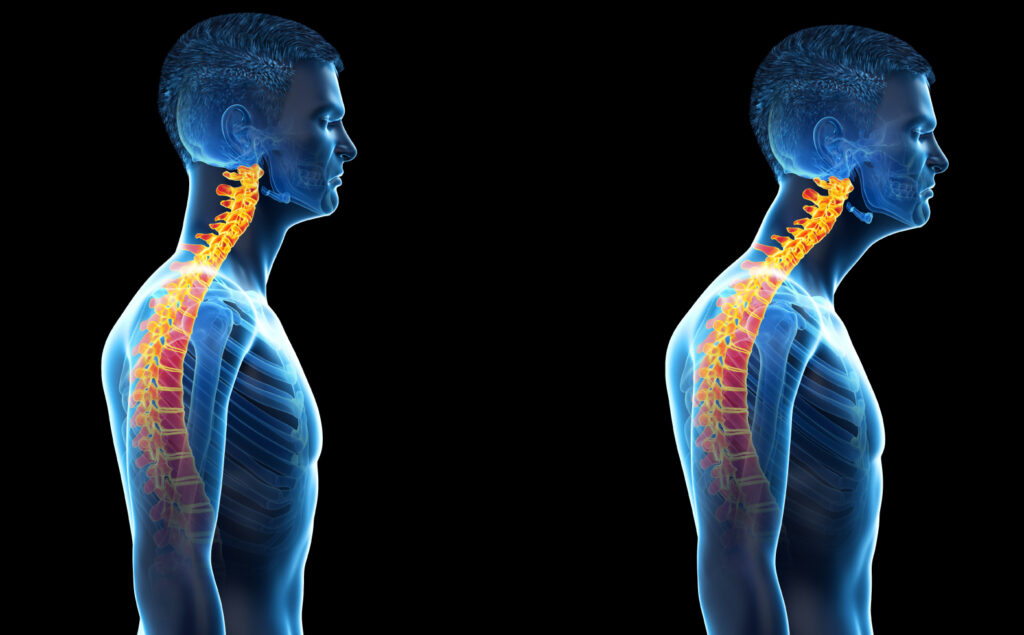
Forward head posture is becoming more and more common as time goes on. This is due in part to our reliance on technology, specifically mobile devices which are causing us to crane our necks in unnatural ways. Additionally, when we are seated at our desks, we tend to lean forward to focus on what’s being presented via our screen. All of this combined with higher than average sedentary lifestyles has led to an epidemic of forward head posture where one may not only experience pain, discomfort, and tension; but also herniated discs, loss of strength in the neck, and a predisposition to other conditions along the way. All in all, forward head posture needs to be dealt with effectively and efficiently to ensure no further worsening of the condition or physical damage to the patient. Read on to learn more about how forward head posture can be resolved with the right level of care and attention.
What is Forward Head Posture?
Forward head posture is what you may see out and about in public where one stands up from their desk or looks away from their mobile device and their head is jutting forward away from their shoulders and neck. This is not only physically unwell for the human body, it’s also an unattractive look when it comes to preferred posture. See the image below of what forward head posture looks like compared to regular head posture:

What Causes Forward Head Posture?
This is a great question. More often than not, it’s years of repeated positioning and strain on the neck and shoulders from sitting at a desk and leaning forward, watching television in poor postural positions, or craning your neck to view your mobile device. It can also be caused by physical deformities, yet this is often rare.
How to Fix Forward Head Posture
Fixing forward head posture involves a physical approach at first where one undergoes a lifestyle transformation where they must place a strong emphasis on correcting posture throughout the day. From there, it’s vital to incorporate physical therapy, exercise regimens, stretching regimens, posture training, and nutritional therapy. All of these strategies can greatly improve your posture and restore your proper positioning of your neck and head above your spine.
How Long Does it Take to Fix Forward Head Posture
Fixing forward head posture may take multiple years of effort, work, and commitment. Just as it took multiple years to develop forward head posture, it also may take multiple years to reverse forward head posture and restore the proper posture and curvature of the neck and spine.
How to Prevent Forward Head Posture
Preventing forward head posture is just as important as treating forward head posture. With proper prevention, you won’t have to worry about fixing your posture over time, as it’s already correct in the first place. Preventing forward head posture consists of strengthening your core muscles to promote better natural resting posture, avoiding prolonged sitting, avoiding craning your neck while looking at mobile devices or computers, and stretching daily to promote a healthier physical frame.
How We Can Help with Your Forward Head Posture
There are methods mentioned above where we can help with your forward head posture. Let’s explore some of those methods below:
Physical Therapy
Physical therapy is key to treat nearly any physical injury, condition, or ailment. Forward head posture is no different. Physical therapy for forward head posture helps you regain the flexibility, motion, strength, and stamina to properly carry your head above your spine throughout the day without the tendency to return to your previous state. Physical therapy can identify areas which need to be improved upon which may seem unrelated to your forward head posture at first, yet upon further examination these areas are fully connected to the forward head posture itself (i.e.: core strength).
Exercise Regimens
Exercise helps to build muscle, strength, and stamina to better promote a healthier lifestyle where you’re not sitting all day in front of a screen. Exercise is not only going to improve your forward head posture, it’s going to improve your overall health and wellness. Regaining the confidence to incorporate exercise into your daily routine will in turn help you regain the confidence to achieve your goals of overcoming forward head posture.
Stretching Regimens
Stretching is crucial to any physically fit body, and with forward head posture, you’re going to need to address old habits and stretch them out of your system. It may seem tough at first, but with the right help and care, you’re going to be able to stretch naturally and regain motion, flexibility, and functionality of your neck, back, and spine.
Posture Training
Posture training helps retrain your body to recognize the good habits you’re building up, and toss the bad habits aside. Posture training may consist of regimented holds of your posture to prevent regression back into old ways. It could also consist of wearing a posture correction brace to assist the progression towards full restoration of the neck, back, and spine.
Nutritional Therapy
You are what you eat, and this is certainly true when it comes to correcting posture. If you’re not feeling great internally, you’ll most likely begin to show it on the outside as well. When you eat the right foods, you’re in a better mood, you’re feeling better physiologically, and you’re able to continue forward with your goal of correcting your forward head posture. Having a proper diet is key in any aspect of life, yet it’s especially important in correcting conditions throughout the body and leading the way to further success over time with your health.
Contact Us Today for Help With Your Forward Head Posture
If you’re struggling with forward posture, feel free to contact us using the form below. We’ll be sure to have you seen by one of our specialists who can determine the next best steps going forward . We look forward to hearing from you soon and we’re eager to help you regain full control and confidence of your posture through our highly-trained neck, back, and spine experts.
DISCLAIMER: No content on this site, regardless of date, should ever be used as a substitute for direct medical advice from your doctor or other qualified clinician.